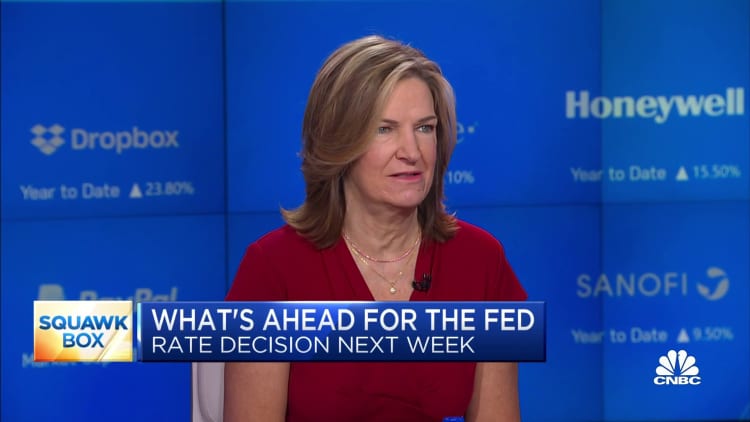The Marriner S. Eccles Federal Reserve building in Washington.
Stefani Reynolds/Bloomberg via Getty Images
Experts anticipate that the Federal Reserve will likely raise rates by a quarter of a point at the conclusion of its upcoming meeting, following a pause last month.
Fed officials have repeatedly expressed concern over the impact of rising costs on American families and have pledged not to be complacent.
Although inflation has started to cool, it remains above the Fed’s 2% target.
Since March 2022, the central bank has raised its benchmark rate 10 times, bringing it to a targeted range of 5%-5.25%, the fastest pace of tightening since the early 1980s.
A report by WalletHub found that 77% of Americans have been directly affected by the Fed’s moves, with 61% experiencing a financial hit.
While savings accounts are earning more interest, it is also becoming more expensive to borrow money for major purchases like a home, leading to concerns about a potential recession.
Five ways the rate hike could affect you

If the Fed raises rates, financing costs for consumer loans, such as credit cards, will increase.
Already, the cost of variable rate debt has risen significantly. However, there is a concern that the impact of these rate hikes may soon become more pronounced.
Here’s a breakdown of how another rate increase could affect your credit card, car loan, mortgage, student debt, and savings deposits.
1. Credit cards
The average credit card rate is now over 20%, an all-time high. As the federal funds rate increases, the prime rate and credit card rates follow suit.
If a 25 basis point hike is announced, consumers with credit card debt will spend an additional $1.72 billion on interest this year alone. Over the next 12 months, credit card users will end up paying around $36 billion in interest.
2. Adjustable-rate mortgages
Adjustable-rate mortgages and home equity lines of credit are tied to the prime rate. The average rate for a HELOC is now at its highest in 22 years, and homebuyers will pay roughly $11,160 more over the life of a 30-year fixed-rate mortgage.
3. Car loans
Purchasing a new car may become more expensive due to rising interest rates. The average rate on a five-year new car loan is already at its highest in 15 years.
Consumers could end up paying $2,273 more in interest over the course of a $40,000, 72-month car loan.
4. Student loans
New federal student loan rates have increased, and private student loan rates will also rise as the Fed raises rates. Existing federal education debt benefits from rates at 0% until October.
5. Savings accounts
While the Fed does not directly influence deposit rates, savings account rates tend to be correlated with the target federal funds rate. Currently, top-yielding online savings account rates are at their highest since the 2008 financial crisis.
However, if this is the Fed’s last increase for a while, yields may start to decline.
Denial of responsibility! VigourTimes is an automatic aggregator of Global media. In each content, the hyperlink to the primary source is specified. All trademarks belong to their rightful owners, and all materials to their authors. For any complaint, please reach us at – [email protected]. We will take necessary action within 24 hours.


